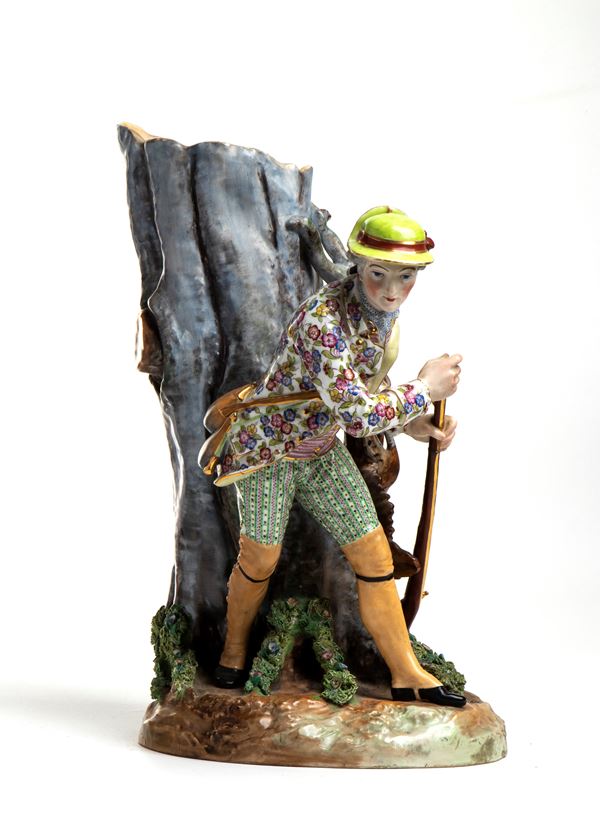338
Porcelain sculpture depicting a young hunter, 19th century
Height x width x depth: 40 x 20 x 25 cm.
produced by the renowned Jacob Petit manufactory, depicts a young hunter or explorer. He wears colorful clothing with floral details and striped pants, yellow boots and a bright green hat, while holding a walking stick. The scene is set on a base decorated with rocks and vegetation. The high quality of the modeling and painting reflects the typical style of Jacob Petit, famous for his detailed figures and use of bright colors.
Jacob Petit (1801-1868), one of the leading French manufactures of the 19th century, known for his masterfully crafted porcelain figurines.
Literature:
acob Petit (1796-1868), born Jacob Mardochée, was one of the most celebrated French ceramists of the 19th century, known for his ornamental porcelain in an eclectic and lively style.
acob Petit (1796-1868), born Jacob Mardochée, was one of the most celebrated French ceramists of the 19th century, known for his ornamental porcelain in an eclectic and lively style.
Petit began his artistic training in the studio of the painter Antoine-Jean Gros, a pupil of Jacques-Louis David. In 1822 he joined the Sèvres Manufactory as a painter on porcelain. After a period of travel and study in Europe, he published a collection of interior decorations in 1830-31. Together with his brother Mardochée, he bought a porcelain manufactory in Fontainebleau and later opened a workshop in Paris in 1863[1] .
Jacob Petit's porcelain is distinguished by:
- *Rococo style revisited*: bold and imaginative shapes, often inspired by 18th-century Rococo.
- *Bright colors*: use of shades such as pale pink, light green, mauve, black, and gold.
- *Elaborate decorations*: floral motifs, mythological scenes, exotic elements, and gold details.
- *Variety of objects*: production of vases, figurines, clocks, tea and coffee services, perfume bottles, and other decorative objects[2] .
His works were often signed with the initials “J.P.”
€ 3.000,00 / 4.000,00
Estimate
€ 700,00
Starting price
Unsold
Live auction 344
ANCIENT FURNITURE AND WORKS OF ART FROM 16th TO 20th CENTURY
Palazzo Caetani Lovatelli, tue 1 July 2025
SINGLE SESSION 01/07/2025 Hours 15:00
New lots currently at auction










